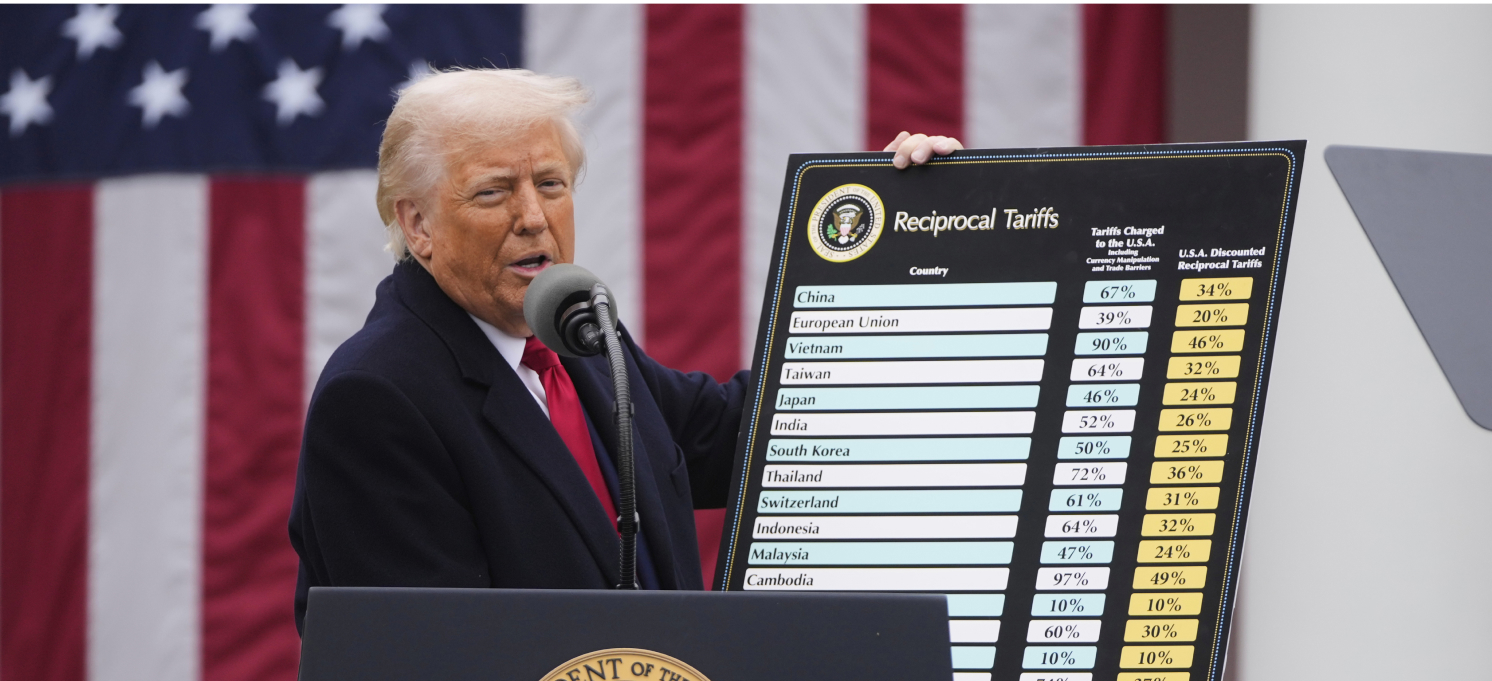
Inside Russia’s budget: Taxes, borrowing, reserves
Hello! Welcome to your weekly guide to the Russian economy — written by Alexandra Prokopenko and Alexander Kolyandr and brought to you by The Bell. This week we look inside Russia’s record high government budget, detailing the plans for taxes and spending, assessing the solidity of Moscow’s reserves and the likelihood of a budget crisis in the coming years.
Higher taxes, low debt and plentiful reserves help Russia fund record military spending
The Kremlin is planning to raise military expenditure by 25% to $140 billion a year, according to budget plans submitted to parliament earlier this week. And the spending is set to remain at this post-Soviet record high for at least three years. At the same time, the government intends to run a budget deficit of no more than 1% of GDP and is not counting on any windfall income from oil revenue. So how does Russia plan to pay for yet another increase in military output? In short, not through exploiting its natural resources, but rather at the expense of the population.
Taxes
The government expects oil and gas revenues, which were the main fuel for Russia’s military machine in 2022, to decrease over the coming years. In 2025, they expect to raise 10.94 trillion rubles ($115 billion at current rates), 370 billion rubles down on the plans for this year. And by 2027, Moscow expects energy revenues to have dropped further, to 9.77 trillion rubles. A fall in global oil prices, reduced production and a lower tax burden are among the reasons cited for the decline by the finance ministry.
Despite lower oil and gas income, the government expects an overall increase in its tax take — mostly powered by sales and corporate taxes. Overall, the government expects tax revenues to increase to 29.4 trillion rubles in 2025, up 18.4% from 2024. It then expects more modest increases of 6.5% and 6.85 in 2026 and 2027 respectively. The extra income is partly down to economic growth, since the more companies earn and the more the population consumes, the more taxes will be collected.
But rises in overall tax rates, rather than just a bump in activity, contribute a larger share, not least because the extra revenue (including from a higher corporate tax rate) will be diverted into the federal budget, not given to the regions. Roughly speaking, a little over a third of the additional budget revenues are set to come from economic growth, with the rest from an increased tax load on business and the general population.
Borrowing
Moscow still plans to run a budget deficit over the coming years, albeit not a large one: 0.5% of GDP in 2025, or 1.17 trillion rubles, then 0.9% and 1.1% of GDP in the following two years. Such a gap still needs to be covered. Moreover, the deficit level will almost certainly increase compared to what the finance ministry is predicting. In 2024, the original plan was for a 0.9% deficit, but that has now risen to 1.7%.
To cover the gap, the state will have to increase borrowing — something it can afford. The government’s debt-to-GDP ratio, as predicted by the finance ministry, is set to reach just 18% in 2027 — a quarter of the average level seen in developing economies. This low rate is not just a consequence of the authorities’ fiscally conservative policies over many years, but also a result of the West’s ban — long threatened and then enacted — on investing in Russian state debt.
Under sanctions, the Russian state can only borrow within the country, including from state-run banks. Next year the finance ministry plans to raise 4.78 trillion rubles (about $50 billion) on the domestic market — 17% more than in 2024. Taking into account repayments, the net debt placed by the government will be 3.37 trillion rubles, against 2.68 trillion rubles this year. But this year the ministry has not managed to hit its borrowing schedule. The amount raised in the second and third quarters was only half that planned. With interest rates above 15% and set to rise further, the market is not willing to lend money to the government right now. Meanwhile, the finance ministry itself is not thrilled at the prospect of having to borrow at such high costs. But the Central Bank has said multiple times that high rates are going to be around for a long time yet.
Reserves
The finance ministry still has the opportunity to use the National Welfare Fund to cover the deficit, if it needed to. Technically that would breach long-established rules as well as the government’s plans as set out in the draft budget. But there is nothing in practice stopping the Kremlin from changing the rules or giving the go-ahead to dip into the pot. The fund is set to be worth just over 11 trillion rubles ($116 billion), or 5.6% of GDP, at the end of 2024. By the end of next year it is expected to climb to 12.883 trillion rubles, even as the government plans to spend 1.3 trillion rubles this year and another 600 billion rubles in 2025.
The authorities are also planning to replenish the fund, if possible. The planned 1.6-trillion ruble increase next year will take it to 6% of GDP. The share of the fund held in liquid assets is set to increase as well — up from 3.7 trillion to 5.5 trillion rubles. However, reality could yet thwart these plans. Oil prices might end up lower than projected, or the debt placement plan might need adjustment. So far, though, the figures do not back up rumors that the fund is on course for imminent complete depletion. Even if oil prices come in $10 a barrel lower than the projected budget figure of $69.70, over the course of the coming year — at the projected dollar exchange rate — this would still leave the size of the fund more or less the same.
Why the world should care
We already wrote about how Russia is increasing military spending at the expense of social spending, which will drop significantly as early as next year. Russians’ personal living standards will also no longer be advancing at the same rate. Although wellbeing is set to continue rising in material terms due to overall government stimulus and labor shortages, the pace of the increase will slow. Salaries in real terms are set to rise 7% next year, down from 9.25% this year. By 2027 the annual increase will be 4.1%. Real disposable incomes — a key measure of living standards — are set to slow even faster due to increased utility charges and expensive borrowing fees. They will rise 7.1% this year, then 6.1% in 2025 and 3.4% in 2027.
A $10 fall in oil prices will not trigger economic collapse in 2025. A real threat to the budget would only arise from a combination of factors — a long-term slump in oil prices and, for example, an increase in hidden or overt mobilization against a tightening immigration policy.
Russia closes itself off to migrants
Despite a serious labor shortage, which the finance ministry even mentioned in the budget documents, Russian authorities are toughening up legislation on migration.
- The State Duma is on track to adopt five bills against illegal migration by the end of the year. Duma speaker Vyacheslav Volodin announced lawmakers will assess the initiatives as a priority for the current legislative session.
- The government has already prepared positive responses to three of the bills. Specifically, measures that would make being an illegal immigrant an aggravating factor in a criminal case; and two bills outlining tougher penalties for forging migration documents and helping or organizing illegal migration. The two other initiatives due to be considered include the extrajudicial blocking of websites that provide information about illegal services for migrants, and a ban on mediators who organize Russian language exams for migrants.
- According to interior ministry figures, 6.2 million foreign residents live in Russia — around 9% of whom are in the country illegally. These figures do not include people who arrive and then become naturalized Russian citizens.
- In accepting one anti-immigration restriction after another, it’s likely that central and regional authorities are pursuing two goals. First, they want to respond to the demands of Russian society, which is largely opposed to immigration. Second, they want to increase the number of migrants who take Russian citizenship and are therefore eligible to be drafted for military service and to fight in Ukraine.
- Several Russian regions have banned migrants from bringing their families to Russia, selling street food or working in healthcare or education over recent months. For instance, migrants in the Nizhny Novgorod region are unable to receive work permits until the spring of 2025. Schools are being advised to restrict the number of migrant children in their classes and to test their Russian language ability, while the interior ministry has pledged to launch a register to monitor all illegal immigrants by March 2025.
Why the world should care
The Russian authorities’ anti-immigration measures are aimed at reducing potential social discontent, which looks set to increase amid the projected slowdown in real income growth. It also aims to push migrants into taking Russian citizenship, making them eligible for the army and improving tax collection. As a result, Russia’s dwindling flow of migrants could drop even further, leading to more labor shortages and inflationary pressure on wages.
Figures of the week
The government wants to oblige state corporations to compensate the budget with a payment worth 50% of the market value of any companies transferred to them after being nationalized “by court decision.” The market value will be determined by an independent appraisal. This would apply to all assets transferred to state corporations from next year. This is far from the first step seeking to help boost the government’s coffers from the nationalization drive. Foreign companies leaving Russia are already charged an exit tax worth 15% of the market value of assets sold in Russia — a proportion that could be increased to 40%.
A court has frozen $372 million in Russian accounts belonging to BNY Mellon and JPMorgan at the request of the prosecutor general, who filed a lawsuit against two Ukrainian government agencies and two American banks. Russian prosecutors are demanding compensation from them for the seizure of the International Reserve Bank, a former Ukrainian subsidiary of Sberbank. Prosecutors initially asked to freeze assets worth 93.5 billion rubles (about $1 billion).
In October, the Finance Ministry will reduce its foreign currency purchases by almost two-thirds to around 3.1 billion rubles a day. The reduction is expected to support ruble exchange rates.
Weekly inflation in Russia from Sep. 24-30 increased to 0.19%, according to Rosstat. Annual inflation was running at 8.7%. In total over the course of the month, price increases in Russia were 0.42% and since the start of the year, 5.72%.
Further reading
How Serious a Threat Is Russia’s New Nuclear Doctrine?
A Mixed Balance Sheet: Russia’s Uneven Influence in the Maghreb



PAID SUBSCRIPTION LAUNCH
From May 1, 2025, The Bell in English will no longer be free
From May 1, 2025, all The Bell’s newsletters and online content will be behind a paywall. We have taken this decision so that The Bell can remain financially independent, and maintain our high standards of journalism and economic expertise





